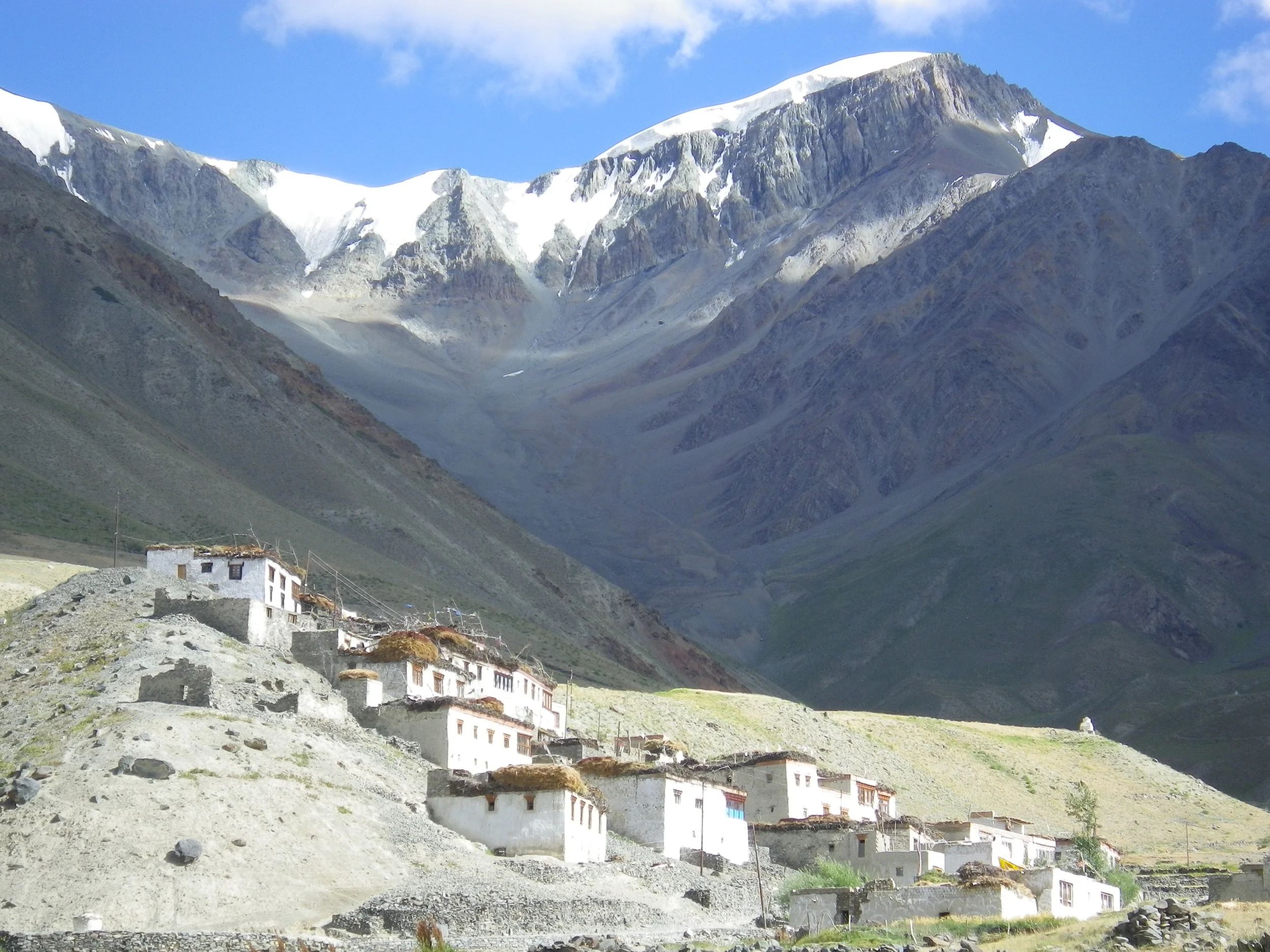
The Old Village
The mud brick homes of Kumik, likely the oldest village in Zanskar, cluster tightly on the end of a moraine ridge in the shadow of the mountain called Sultan Largo.

The Stream
The single stream that makes life in Kumik possible. By August this canal has usually run dry.
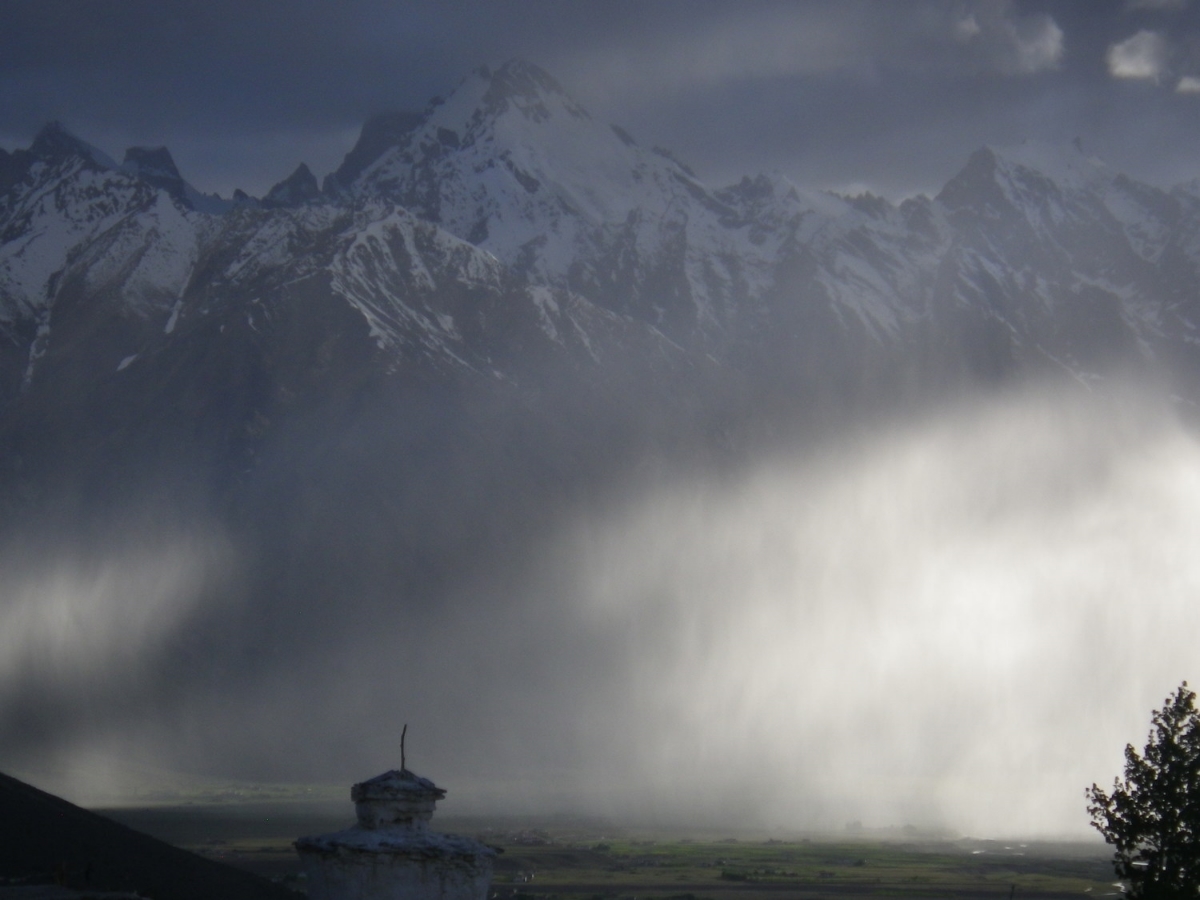
The Rain Shadow
A rare rain shower falls on Zanskar's central plain, with one of Kumik's Buddhist chorten monuments in the foreground. Zanskar lies in the "rain shadow" of the Great Himalaya, which mostly blocks monsoon summer rains from reaching the consequently arid Tibetan Plateau.
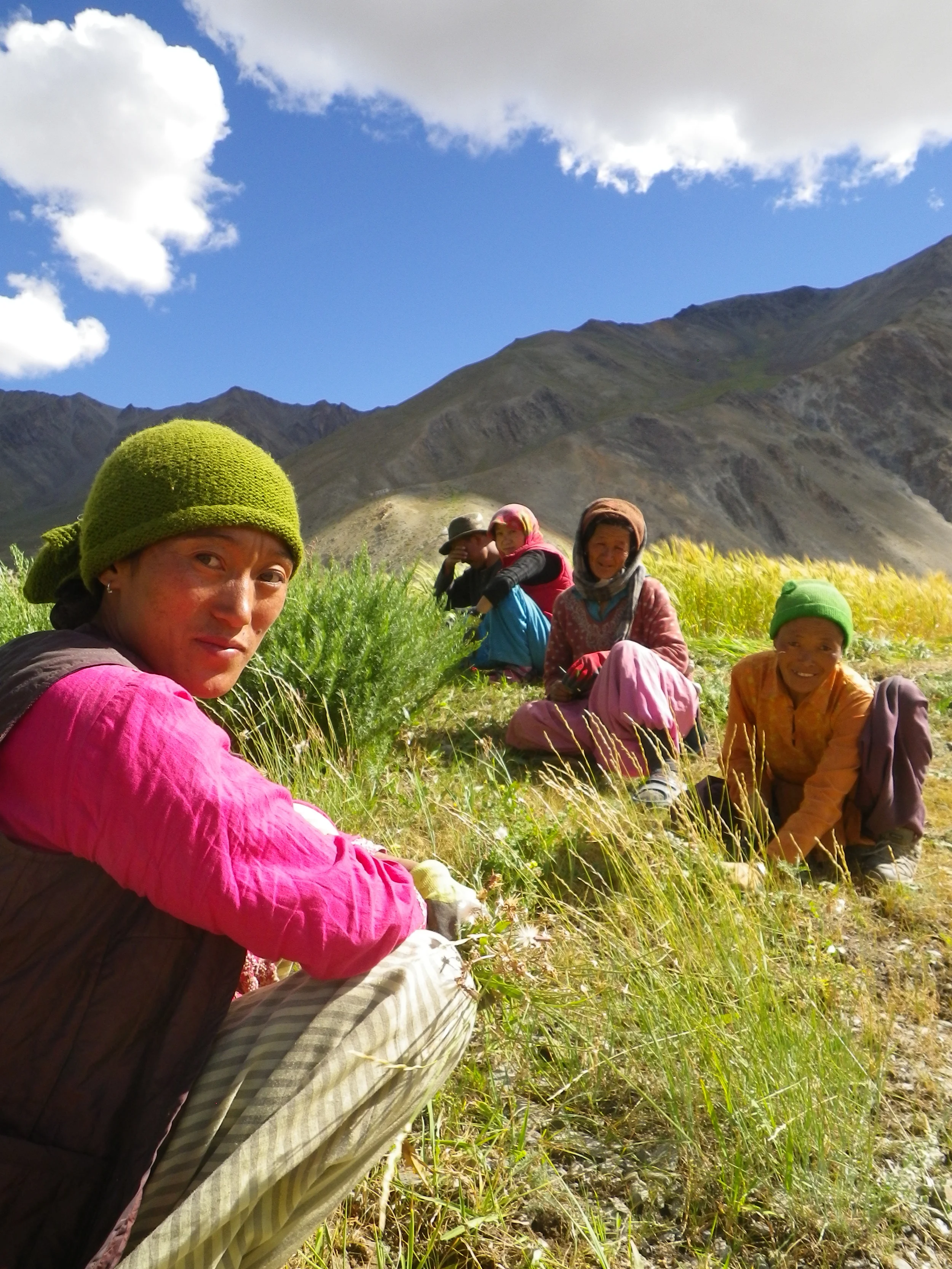
The Harvest
Each August and September, families and neighbors come together to harvest fodder grasses, wheat, peas and barley. It's hard work that sometimes feels like a party.
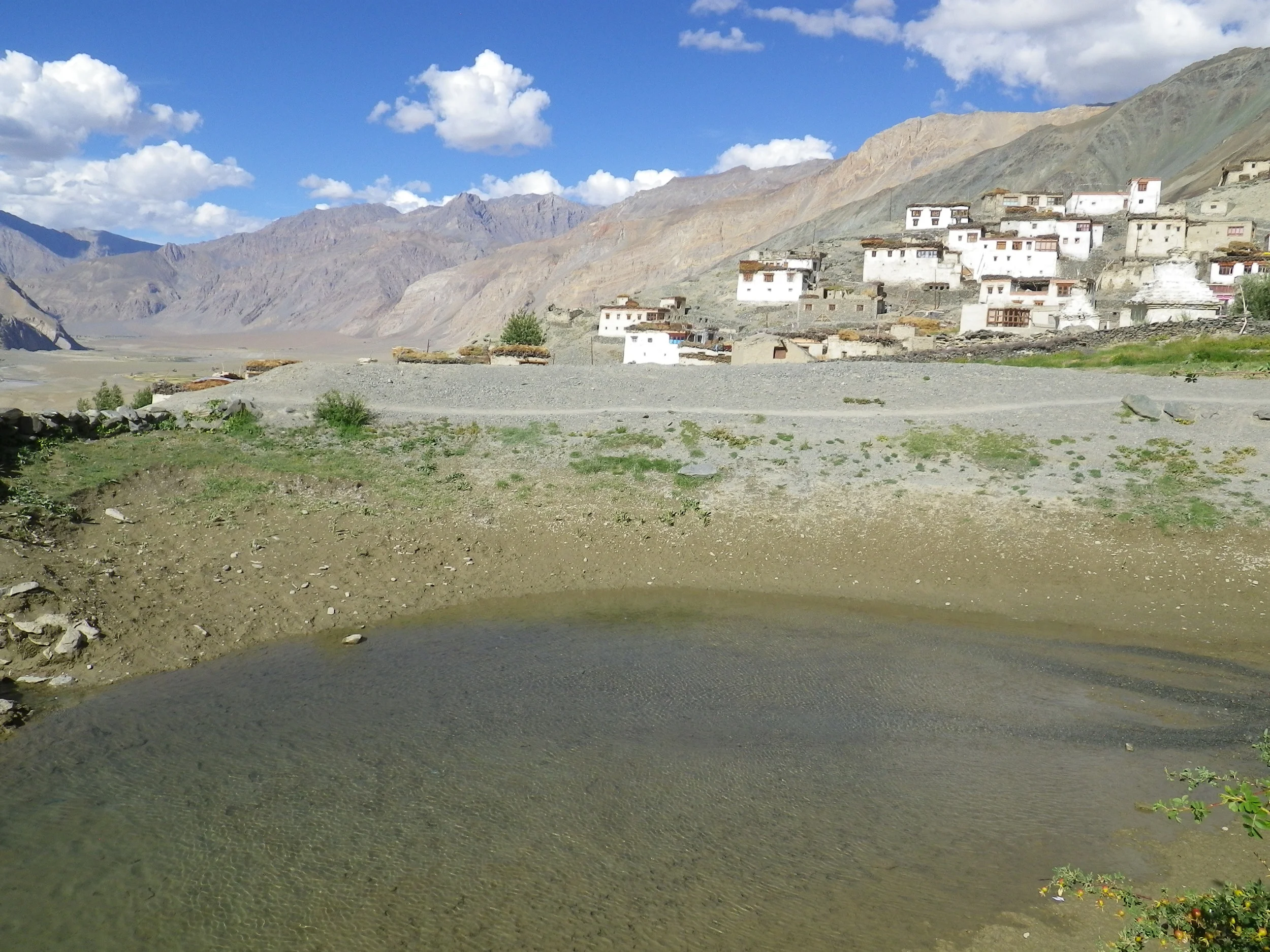
The Storage Pond
This zing, or reservoir, is one of two holding ponds that bank precious meltwater overnight for irrigation use by rotating groups of households during the day.
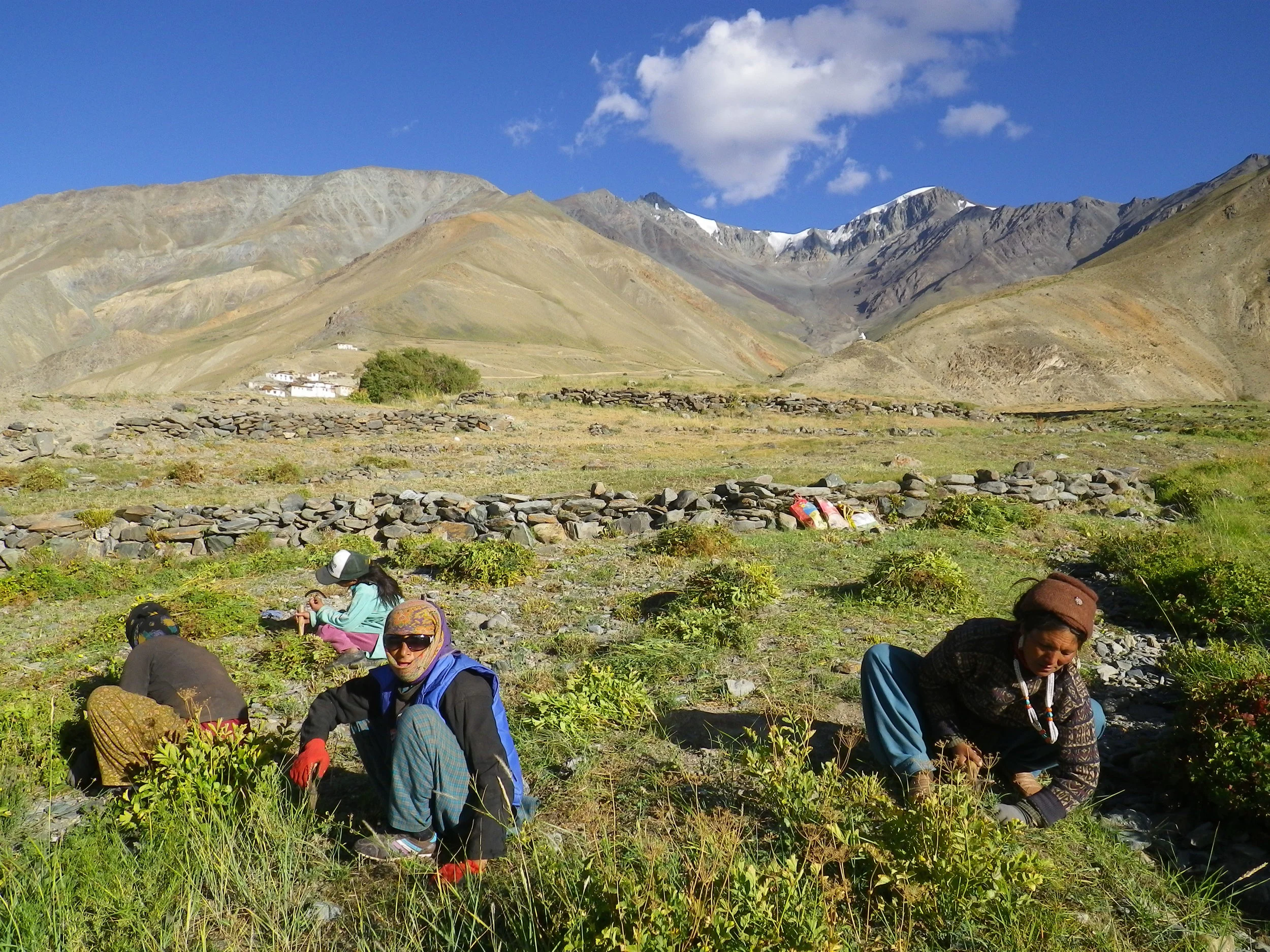
In Summer, Thinking of Winter
Villagers harvest fodder grasses to feed their livestock through the long winter to come.

Making the Rounds
Winter snows can’t deter the grandmothers of Kumik from circumambulating the old village temple, thermoses of salty butter tea in hand.

The Mountain
A barley field in mid-harvest, watered by the retreating snow and ice on the mountain above Kumik.

The New Village
Eight hundred feet below and a couple miles distant from the old village (in background to the right), a stone-and-cement home rises on the dry, windy plain of Marthang, where the villagers of Kumik are starting over.
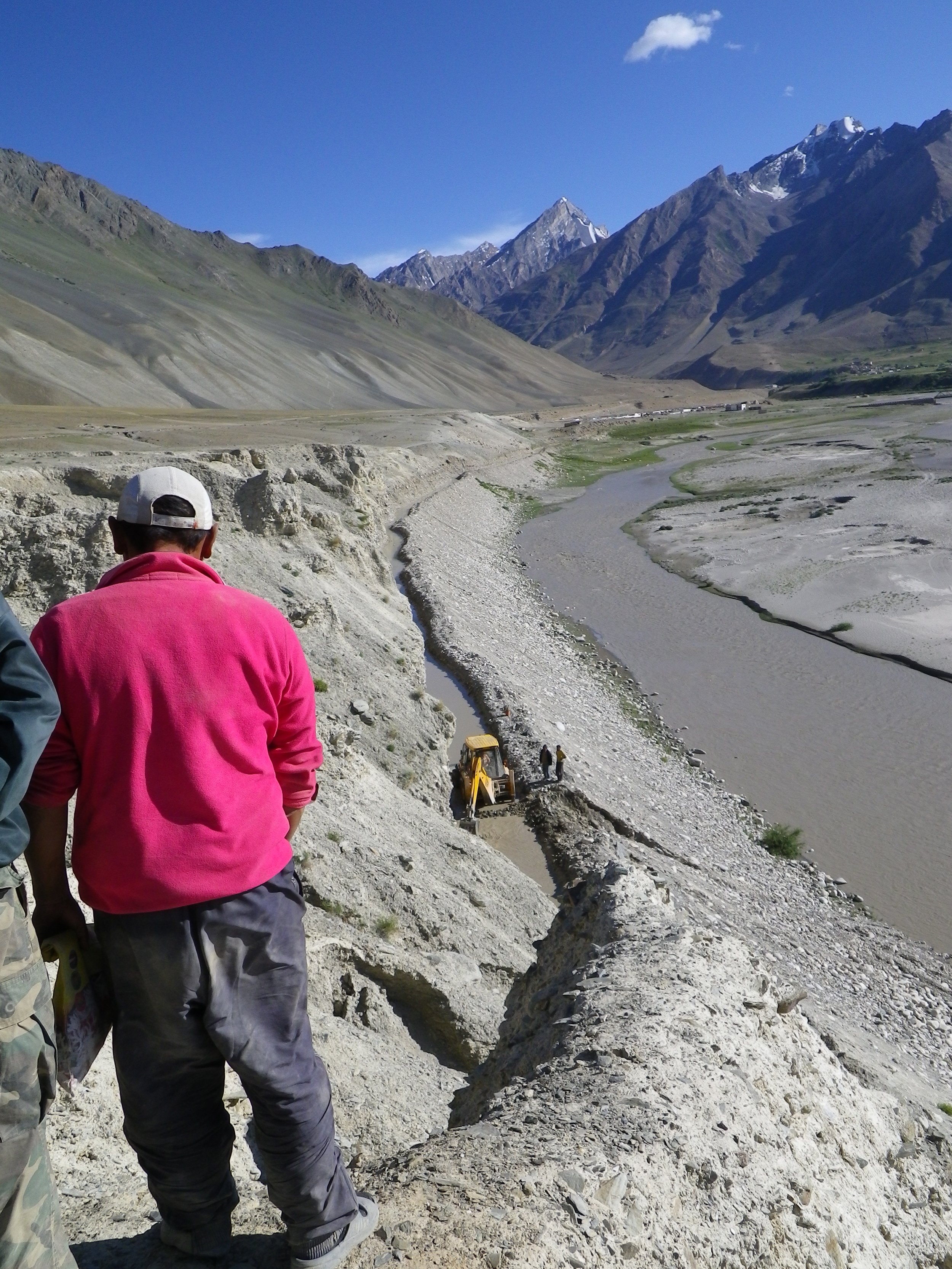
The New Canal
Kumikpas watch a diesel-powered excavator clear soil from a canal section they once dug by hand. This canal brings river water to the site of the new village in Marthang, but it's frequently blocked by collapsing cliff walls and silt, requiring constant maintenance.

Laying Out the New Solar Lhakhang
Sonam Dawa holds the end of a measuring tape, helping lay out the dimensions of a future solar-heated community and prayer hall, to be built by Kumikpas’ collective labor.
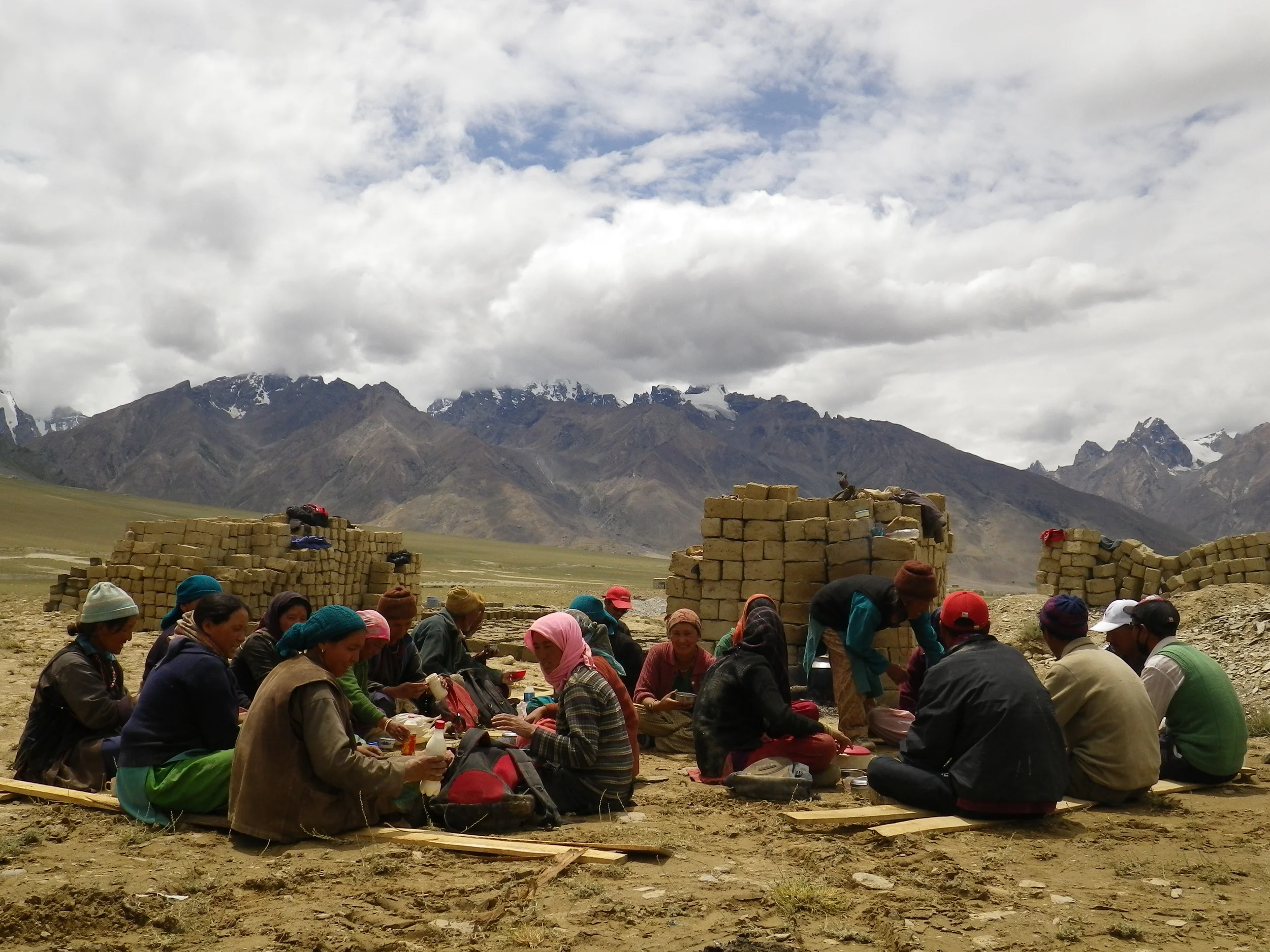
Lunch Break
In the heart of the new village, Kumikpas rest and eat next to the piles of drying mud bricks that will form the walls of the new solar community hall. Each household contributes ten days of labor to the project.

A New Lifeline
With a simple pickaxe, a Kumikpa hacks a small canal into the hard earth of Marthang, the site of the new village, in the shadow of Himalayan glaciers.
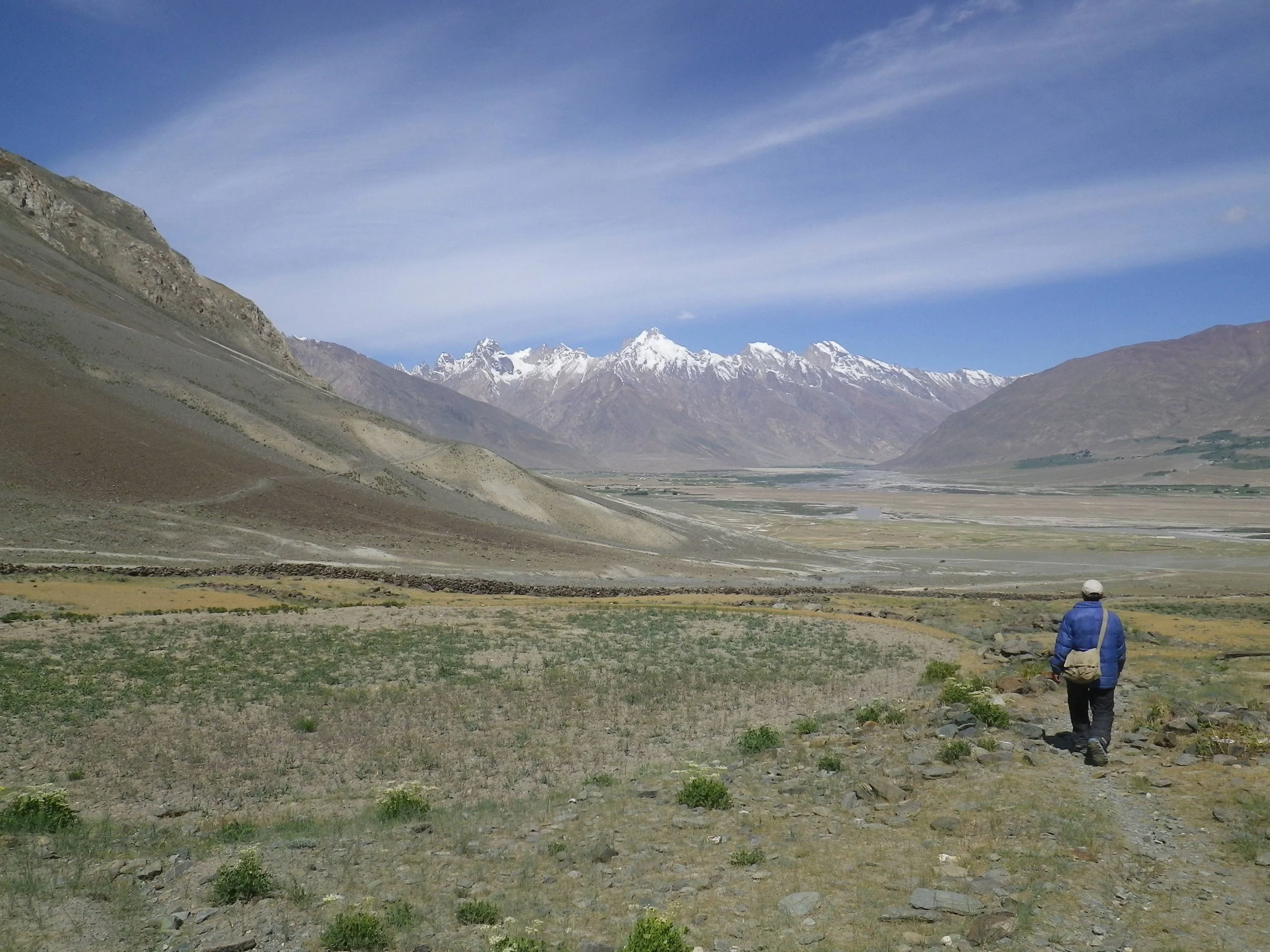
Facing the Future
Tashi Stobdan, the village school headmaster, walks through Kumik’s bone-dry fields toward his future home on the plains of Marthang, the “red place.”













